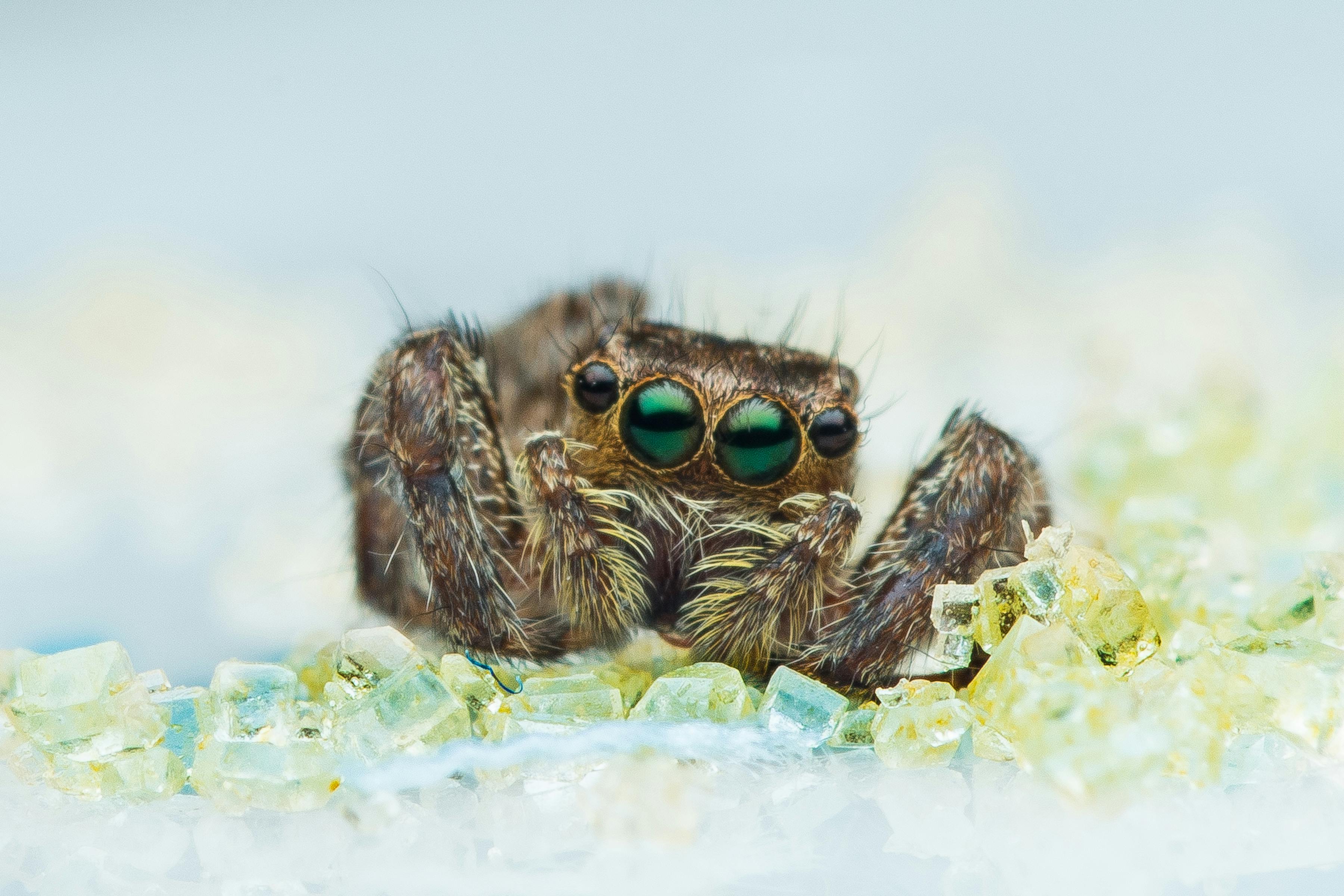

How to Feed Your Jumping Spider Without the Drama
Feeding your jumping spider is one of the most fun parts of being a keeper.
It’s like watching a tiny lion hunt — stalking, pouncing, and munching its way through live prey with impressive skill (and a touch of adorable menace).
But knowing what to feed, how often, and how much can be confusing — especially for new keepers.
This guide breaks it all down: prey types, feeding frequency, safety tips, and bonus tricks to keep your jumper healthy and happy.
Jumping spiders are active, visual hunters. They won’t eat dead prey, and they don’t build webs to trap food. Instead, they need live, moving insects they can see, track, and pounce on.
| Insect | Best for | Notes |
|---|---|---|
| Fruit flies (D. hydei) | Slings & juveniles | Very small, easy to breed |
| Houseflies | Juveniles & adults | Great movement, easily available |
| Crickets | All stages | Must be small and well-fed |
| Mealworms | Adults (occasional) | Only use freshly moulted worms |
| Waxworms | Adults (treat only) | Fatty — feed sparingly |
| Roaches (red runners) | All stages | Non-climbing ones are ideal |
🛑 Avoid wild-caught bugs. They can carry pesticides or parasites.
How often you feed depends on your spider’s age, size, and appetite.
| Age/Size | Feed every... | Amount |
|---|---|---|
| Slings | 1–2 days | 2–4 small fruit flies |
| Juveniles | 2–3 days | 1–2 small prey items |
| Sub-adults | 3–4 days | 1 larger or 2 small bugs |
| Adults | 4–5 days | 1 medium prey item |
Your spider's abdomen should look gently rounded — not skinny, not bloated. This is your best visual cue for adjusting the schedule.
Always supervise the spider and its prey during this! Especially crickets, as they have been recorded to hurt or even kill jumping spiders.
Don’t panic. Skipping meals is totally normal at times.
Wait 1–2 days and try again with a small, lively feeder. If they continue refusing to eat when thei abdomen is shriveled and tiny then that is when you know something is wrong.
Jumpers get most of their hydration from food — but offering water droplets is still important.
🚫 Don’t use water bowls — jumpers don’t recognize standing water and could drown.
| Task | Frequency |
|---|---|
| Feed spider | Every 2–5 days |
| Mist enclosure | 2–3× per week |
| Remove leftovers | After 24 hours |
| Check abdomen size | Weekly visual |
| Gut-load feeders | Before feeding |
Watching your jumper eat is one of the best parts of keeping them. It’s also the perfect time to:
They’ll start to recognize the tweezers or your hand — and may even come out when they know food is near.
Feeding your jumping spider isn’t just about nutrition — it’s part of the bonding process. It’s where you build trust, observe behavior, and see them in action as the incredible tiny predators they are.
Get the food right, and everything else becomes easier — from molting to hydration to personality.
Bon appétit, fuzzy friend. 🕷️🍽️